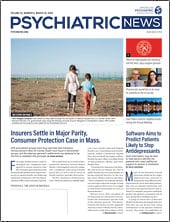Researchers around the world are investigating how drugs such as LSD, MDMA (also known as ecstasy), ketamine, and psilocybin (the active ingredient in magic mushrooms) can treat patients with substance use disorders (SUD).
Though there is still a lot to learn, early results suggest that patients might be able to become substance free for months, or even a year, after just one psychedelic treatment. Yet while some experts say the drugs show promise, numerous barriers to research persist, making it difficult to conduct large studies. Not only are the drugs classified Schedule I by the Drug Enforcement Administration (DEA), misconceptions abound about their potential uses and effects on patients.
But psychedelics are gaining more traction. Researchers at Yale conducted a field study of more than 1,200 people attending art and music festivals in the United States and United Kingdom. Those who had recently used psychedelics such as psilocybin reported sustained improvement in mood and social connection after the high had worn off, reported a study in the January Proceedings of the National Academy of Sciences.
Psychiatrists and other physicians who treat patients for SUD are frustrated over the lack of new, effective drugs, Brian Barnett, M.D., an addiction psychiatrist and researcher at the Cleveland Clinic, told Psychiatric News. “The medications we have now help many patients, but we also see many others who don’t respond to our current treatments.”
“There is a sense of desperation both within our society and within our field, leading many to say it’s time to look for something new,” he continued. “Maybe we should reconsider the way we’ve been looking at these substances and make sure we’re not overlooking their potential as treatments.”
A Paradigm Shift
A May 2019 study published in the Journal of Psychopharmacology surveyed 343 respondents who reported cessation of or reduction in alcohol use following psychedelic administration in a nonclinical setting. According to the study, 28% of respondents “reported that the reference psychedelic experience contributed to a change in values or life priorities.”
Such self-reports, explained Matthew Johnson, Ph.D., one of the study’s authors, are not uncommon among people who have drug-induced psychedelic experiences. They sometimes have a “self-reported epiphany,” he said, which causes them to quit smoking or reduce their alcohol consumption, for example. If such outcomes consistently occur in clinical settings, psychedelics could bring about a paradigm shift within the SUD treatment field, he said, going beyond medications that focus on quelling cravings or withdrawal symptoms.
Johnson, an associate professor of psychiatry and behavioral sciences at Johns Hopkins University School of Medicine and associate director of the university’s Center for Psychedelics and Consciousness Research, is leading a trial investigating psilocybin’s effect on smoking cessation. All participants receive cognitive-behavioral therapy, which includes elements like keeping a smoking journal and assigning themselves a target quit date. Half of the participants also receive a nicotine patch, and half receive a dosage of psilocybin. Its effects last for six hours, during which time they’re accompanied by a clinician.
Of the 28 participants who have undergone a one-year follow-up so far, the psilocybin group’s smoking abstinence rate is 56% compared with 17% for the nicotine-patch group. Smoking abstinence is biologically confirmed using carbon monoxide breath tests and urinary cotinine levels. The results so far are promising, Johnson said. The study has at least another year left, and participants are still being recruited. He’s hoping to follow up with a larger, double-blind trial.
“Most people who permanently quit a drug have tried multiple times, but then at some point, it finally works,” Johnson said. “It’s like a deep tectonic shift takes place. And I think what we’re doing with psychedelics is prompting that.” There are surely some biological underpinnings, which researchers are still trying to understand, he said.
Based on the way people describe their SUD, Johnson said he sometimes thinks of their experiences as “battles for the soul.” Perhaps psychedelics help patients fully realize the damage their disorder is inflicting—a realization that otherwise could take years or never occur at all. “They’ll say something like, ‘I get it,’ ” Johnson said. “ ‘I’ve said it a million times before, and now I get it.’ ”
Barriers to Research
The DEA’s classification of psychedelics as Schedule I drugs is a massive barrier to additional research, explained Franklin King, M.D., a psychiatrist at the Center for Anxiety and Traumatic Stress Disorders at Massachusetts General Hospital. Not only does it make conducting research on the drugs incredibly difficult and expensive, it also reinforces stigma and misconceptions among the public.
One common misconception is that psychedelics are addictive, though research has shown they are not. But that does not mean the drugs are harmless. They are very powerful compounds, King said, which cause significant effects that can be positive when administered in a supportive, therapeutic environment.
King and his colleagues are developing a psilocybin study, but “the walls of issues that come up around it seem formidable,” he said. The study requires a Schedule I license, which can be difficult to obtain. And obtaining the psilocybin itself poses its own challenges, he said. The drugs are expensive and can come with hefty transportation costs, as well.
“There’s a lot that goes into it,” King said, “and that scares people away.”
Introducing New Trials to United States
An observational study in Mexico of ibogaine, a psychoactive found in the roots of the iboga shrub, for the treatment of opioid use disorder (OUD) involved 30 patients who had, on average, already undergone three different types of OUD treatment, according to the study’s lead author, Thomas K. Brown, Ph.D., coordinator of the McNair Scholars Program at the University of California, San Diego. The most common treatment was methadone or buprenorphine maintenance.
The participants typically had been regularly using opioids for years, Brown said. On days they used heroin, participants averaged 1.3 grams a day, according to the study.
The study’s findings were published in May 2017 in the American Journal of Drug and Alcohol Abuse. One month after their treatment, half of the participants reported no opioid use in that period, and 10 reported no past-month opioid use after three months. Though ibogaine has been associated with fatalities, most commonly due to cardiac arrythmia, no adverse cardiovascular events were reported in the observational study.
The study was funded by the Multidisciplinary Association for Psychedelic Studies (MAPS), which was founded in 1986 shortly after the criminalization of MDMA in 1985. While MAPS has funded and supported multiple studies related to psychedelics, it has mainly focused on MDMA as a treatment for posttraumatic stress disorder, but it’s hoping to next focus on ibogaine as a treatment for OUD, said Brad Burge, director of strategic communications with MAPS.
Burge said MAPS is preparing for a meeting with the FDA to discuss the possibility of starting a two-phase safety study of ibogaine, which is necessary before MAPS can start a clinical trial of ibogaine therapy for OUD.
“Psychedelics, as the name implies, facilitate insight,” Brown said. “Oftentimes, they can give people insights into the root of their addictive behaviors, why they’re trying to cover up pain, and what’s at the heart of it all.” ■
“Cessation and Reduction in Alcohol Consumption and Misuse After Psychedelic Use” is posted
here.
“Treatment of Opioid Use Disorder With Ibogaine: Detoxification and Drug Use Outcomes” is posted
here.

